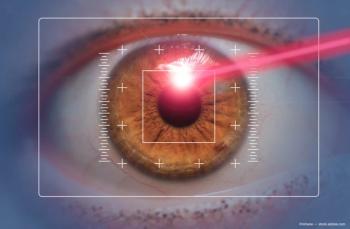
Progression of visual field loss not always easy to test, analyze
Assessing visual field progression in glaucoma may be more of an art than a science-and there is no one test to give reliable information that is needed about a patient, said Chris A. Johnson, PhD, DSc, FAAO, FARVO, professor, Department of Ophthalmology, and director, Visual Field Reading Center, University of Iowa, Iowa City.
Reviewed by Chris A. Johnson, PhD, DSc, FAAO, FARVO
Assessing visual field progression in glaucoma may be more of an art than a science-and there is no one test to give reliable information that is needed about a patient, said Chris A. Johnson, PhD, DSc, FAAO, FARVO, professor, Department of Ophthalmology, and director, Visual Field Reading Center, University of Iowa, Iowa City.
One barrier when looking at progression of visual field loss in glaucoma is there can be various types of impairment, be they systemic or ocular. This can include cataracts, corneal problems, retina disease, or optic neuropathies or systemic issues such as diabetes, inflammatory, infiltrative, or compression lesions.
Other challenges include subjective analyses and reliability of results, as well as considerable variability from one test to another, Dr. Johnson said.
Another challenge is that assessing progression is usually different when comparing multi-center trials with routine management.
Click
Click
Sometimes, circumstances specific to a patient can make assessment of visual field progression difficult. Dr. Johnson referred to a visual field from a patient who would seem to get worse every 6 months and then get better, but then get worse again before getting better.
“Has this person progressed or not? That’s the critical issue,” he said.
Track progression
A variety of systems are used to track visual field progression, including classification systems (including several scoring systems), event analysis (such as Glaucoma Change Progression and Glaucoma Progression Analysis), and trend analysis (such as Progressor and Linear Regression).
Each approach has pros and cons.
“Event analysis is designed to detect progression but not necessarily the rate,” Dr. Johnson said.
“Trend analysis gives the rate of progression, which is important,” he said. “Event analysis looks at change from baseline, while trend analysis examines all the data. In general, event analysis, given the right decision criteria, can detect progression earlier than trend analysis. But rate of progression is a critical factor for patient management.”
Research done by Dr. Johnson and colleagues has found that the follow-up time to determine visual field progression varies two- to three-fold depending on the kind of trend or event analysis used and the decision criteria.
“The critical thing is that they only agree with each other 50% to 60% of the time,” Dr. Johnson said. “This illustrates that no single test or method of analyzing can give you the final result.”
Chris A. Johnson, PhD, DSc, FAAO, FARVO
This article was adapted from Dr. Johnson’s presentation during Glaucoma Subspecialty Day at the 2016 meeting of the American Academy of Ophthalmology. Dr. Johnson is a consultant or advisor for CenterVue, Haag-Streit, the JAEB Center, and M&S Technologies.
Newsletter
Don’t miss out—get Ophthalmology Times updates on the latest clinical advancements and expert interviews, straight to your inbox.
















































.png)


